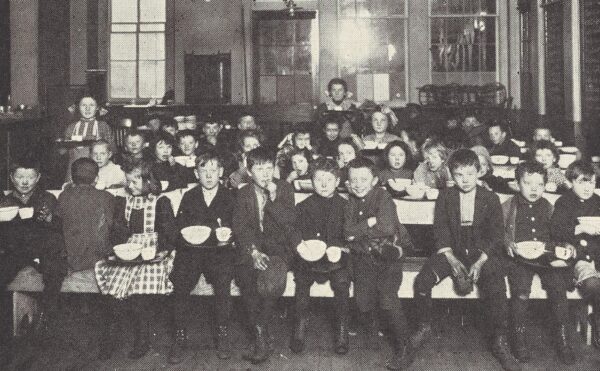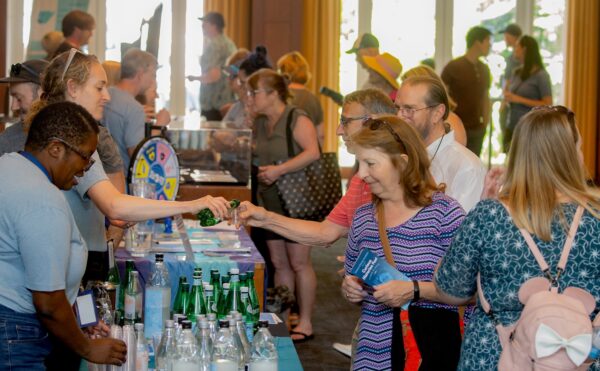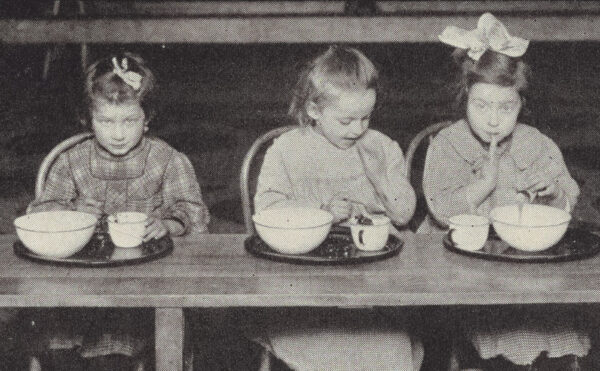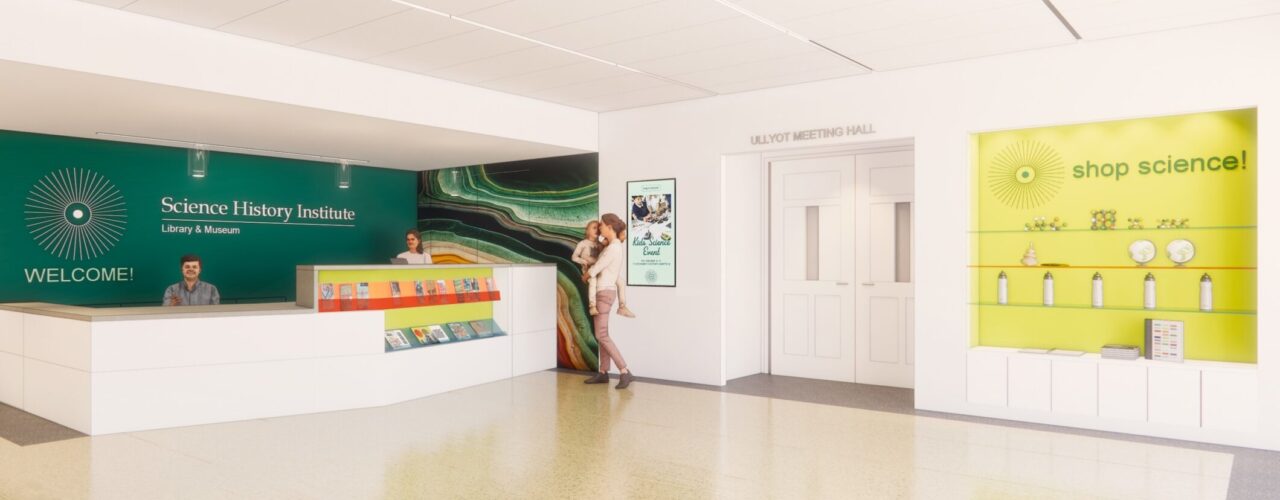
Science History Institute to Install New Exhibit Space, Renovate Lobby, and Add Digital Production Studio and Gift Shop
Our museum will be temporarily closed until March 19, 2025, with a new exhibition slated to open in May 2025.
UPDATED FEBRUARY 20, 2025:
Please note the new date for the reopening of our museum is Wednesday, March 19, 2025.
The Science History Institute will temporarily close for an extensive, multilevel renovation project that includes a full lobby facelift, installation of a brand-new exhibition space, and addition of a state-of-the-art digital production studio and new gift shop. This redesign will improve the public’s access to our spaces and expand our programming and interpretive offerings both in person and online.
The last day to visit the Science History Institute Museum before it closes is Saturday, December 21, 2024. Our museum will reopen on Saturday, March 19, 2025, but the full scope of the renovation project will not be completed until May 2025 (Date TBD).
“As the Science History Institute looks to the future, we are excited to expand how we serve the scientifically curious,” said Institute president and CEO David Cole. “It’s fitting that this project touches on all the ways we tell the stories behind the science: interpretation of a new collection, creation of a recording studio for our award-winning podcasts, and modernization of our photography space so we can provide high-quality digital reproductions of our collections for scholarly and general use. Science has a story and at the Institute, we tell those stories in many ways. This is what we’re all about.”
The centerpiece of the lobby redesign is the installation of a new permanent exhibition that explores the history and science behind a collection of more than 20 minerals recently donated to the Institute. Elements, crystals, and gemstones such as tourmaline, cinnabar, cobaltite, amber, and even a meteorite will be on display, showcasing minerals found in various environments—from the depths of volcanoes to outer space.
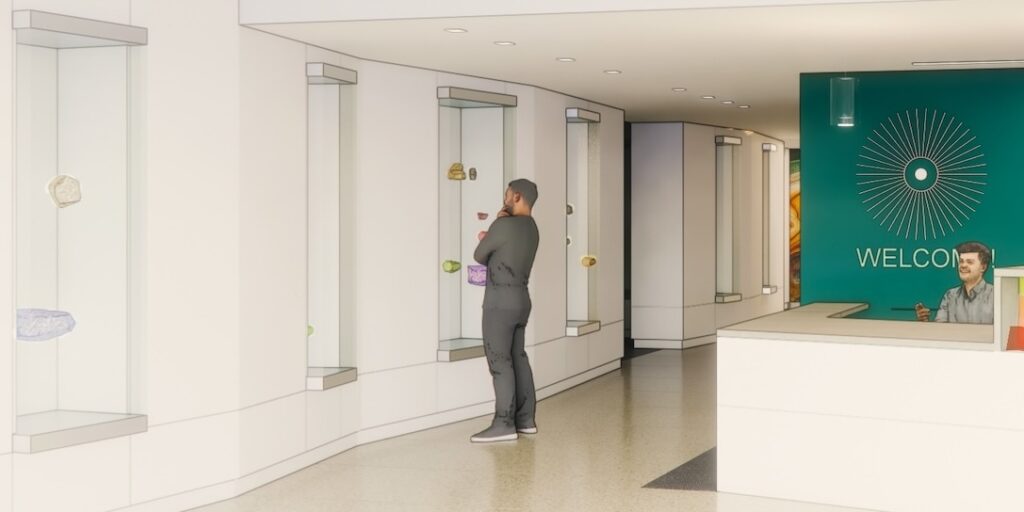
“Our new ‘hall of minerals’ will tell the story of human curiosity about the natural world,” says Jesse Smith, director of curatorial affairs and digital content at the Institute. “People have always asked questions about the materials around them. We will dig into the history of those questions as they relate to these unique minerals and the science behind them. This exhibition will be much more than a display of beautiful objects. It will help orient visitors to the history of science; to the Institute’s unique brand of storytelling; and to the experiences visitors can expect to have in our museum, through our programs, and with our diverse digital products.”
The $3.3 million project is the first major redesign of the Institute’s main building since opening our museum and conference center in 2008. Designed by Atkin Olshin Shade Architects, this project is part of a larger 10-year masterplan to expand access to the Institute and increase offerings. The lower-level renovations include the creation of an ultramodern podcast studio that features a control room and recording space to produce our Distillations and Disappearing Spoon podcasts. A photography studio has also been added to accommodate digitization projects and object photography so we can continue to grow and expand online access to our world-class collections.
In addition to updating the lobby to be more welcoming and engaging for visitors, the renovation also includes the opening of a new gift shop. Guests will have the opportunity to take a piece of science history home with them, including Institute-branded merchandise and items that feature your favorite imagery from our vast digital collections.
During our museum’s temporary closure, visitors can still book a virtual tour or experience our digital exhibitions, which include the history of the plastic bag, the story behind DDT, and the role animals play in vaccines. You can also view our new outdoor exhibition, Sensational Science: A Century of Microbe Hunters, as well as read our online magazine and blog, listen to our podcasts, explore our digital collections, and make an appointment to visit our library.
Project Team and Partners
Thank you to all of our collaborators for their continued work on this project, including Science History Institute staff, AOS Architects, Dan Bosen Associates, INTECH Construction, Case[werks], Flux Art Conservation, Gander & White, Keith Ragone Studios, Ben Neiditz, Will Bucher, and Workspace LLC.
Support
Major support for this project is provided by anonymous donors.
# # #
About the Science History Institute
Founded in 1982, the Science History Institute collects, preserves, interprets, and shares the lesser-known and sometimes overlooked stories from the history of science and technology. And we don’t just mean discoveries made in laboratories. We dive deep into the history of scientific successes and failures, with a focus on expanding knowledge and broadening our understanding of how science and society intersect. We tell the stories behind the science. Visit the Institute’s museum and library, listen to our podcasts, read our magazine and blog, attend our programs, and browse our digital collections. It’s all free so you can be free to discover the science in your life. Learn more at sciencehistory.org or follow us on Facebook, X, and Instagram.
Featured image: Architectural rendering of the lobby renovation and new gift shop.
AOS Architects
More Press
Science History Institute’s New Exhibition Asks: What’s Behind the School Lunch?
Lunchtime: The History of Science on the School Food Tray opens September 27.
Science History Institute’s 2nd Annual Curious Histories Fest Will ‘Color Your World’
The free, daylong celebration of all things color takes place Saturday, June 8, 11am–3pm.
Science History Institute’s ‘Lunchtime’ Project Receives Major Grant from The Pew Center for Arts & Heritage
$289K+ award will support exhibitions, articles, and public programming examining the history of the U.S. school lunch program through the lens of food science.

